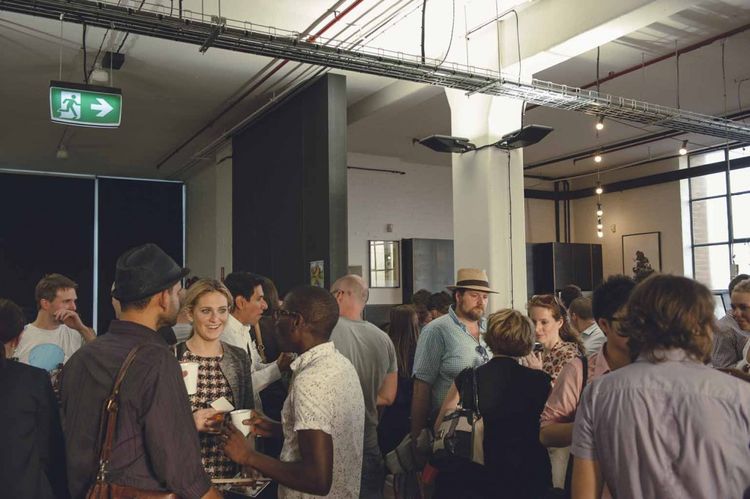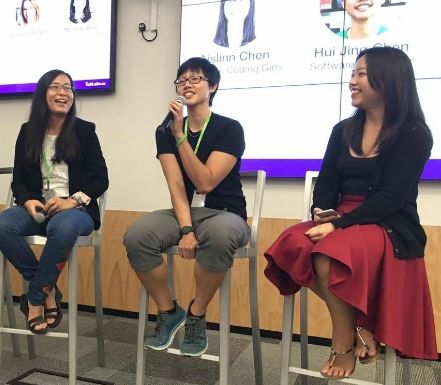Cardly - ushering in artistic and innovative disruption to the age old greeting card
Growing up in a family of newsagents, Patrick Gaskin is no stranger to greetings cards and the waste of paper that invariably comes with discarding all of previous year’s Christmas stock at the start of the new year. Years later, as a marketing professional with a university background in arts, business, and law, Patrick came to learn some of the harsher truths behind this multibillion-dollar industry in which independent artists struggled due to lack of effective royalty schemes and huge barriers to entry into traditional retail outlets. On the other hand, big card companies which could afford to rent their own shelf space at retail stores typically made as much as 70% in gross profit.

Co-founders of Cardly, Tom Clift and Patrick Gaskin (Image courtesy Patrick Gaskin)
At the other end of the chain was the time-poor consumer who was looking for a better alternative than having to make a trip down to the newsagent or supermarket to buy a card and then having to separately buy a stamp and post the card at the post box. This was an industry that was ripe for digital disruption for the greater good of the environment, the artistic community while making the process more convenient for the consumer. This is what prompted Patrick to come up with Cardly.
Cardly is based on the simple idea of custom printed cards bought from a digital store and posted directly to the recipient, thus eliminating the retail store and post office out of the process. The cost and efficiency gains mean that Cardly can give a better to deal to artists, reduce waste and make sending a card to a loved one an anywhere-anytime convenience!
Patrick discussed his disruptive idea over chicken wings with colleague Matthew Buttrey, who had a background in printing. Together, they roped in software whizz Tom Clift who built the Cardly platform from ground up. After about 10 months of development, the MVP launched in December 2015 on Chrome. The platform now is at a beta stage and supports all browsers on desktop and mobile while the team works on bug fixes and other improvements. The hard launch is scheduled for October 2016.
The greetings cards industry is estimated to be worth between US$7 - $8 billion in the US and $500M in Australia and £1.6 billion in the UK. Thus, in order to disrupt these three large English-speaking markets, Cardly sends out printed cards from Sydney, London and New York, always for the price of $6.45 or equivalent in USD or Pounds. One gets to choose from a range of different cards separated by theme or artist and write a message in a font that mimics human handwriting. If you are stuck, they even have pre-written text for inspiration. Add in a doodle, type the address and pay. And your card will be on its way within the next 1 - 2 business days!

Greetings cards ordered on Cardly are printed and posted to the recipient from Sydney, London and New York (Image courtesy Patrick Gaskin)
Currently, Cardly is working with up to 35 independent artists across Australia, US, UK, Canada, and Hungary. The Cardly founders have been passionate about helping artists achieve a fairer share for their creativity and their agreement ensures that the collaborating artist retains full IP ownership under non-exclusive and non-binding terms. Artists have been very willing to work with Cardly as there is an advantage in outsourcing the printing, sales, and fulfilment to a third-party, thus freeing up more time to focus on what they love to do most, which is produce great artwork.
More importantly, the curated nature of the platform means that professional artists get to exhibit in an online gallery alongside their peers. This also opens up a passive income stream for artists as they get paid on sales from their individual subdomain stores under the Cardly platform. 20% of the $6.45 flows directly to the artist, a much better deal than what large players have been able to provide before. There are also significant savings for artists by eliminating printing costs, inventory holding, and wastage.

Cardly collaborates with over 35 independent artists and offers a wide range of beautiful designs to choose from (Image courtesy Patrick Gaskin)
While Cardly has already done a lot of interesting work in its short lifespan, how are they planning on continuing with their development? To find out, I posed a few questions to Patrick and Tom over Saturday breakfast.
You have emphasised on reducing wastage as a way of making the greetings cards industry sustainable. Are there other ways in which you are looking to reduce your environmental footprint?
Patrick: “All our paper stock is FSC certified and has been sourced through responsible forestry practices. Moreover, we want to fully ascertain the carbon footprint of our printers, paper, and ink so that consumers are fully informed of the environmental impact. The long-term ambition is to go carbon neutral.”
Having typefaces that mimic human handwriting is quite innovative. Why don’t you allow consumers to use their own handwriting?
Tom: Mimicking human handwriting was one of the distinctive features of our platform. We took care to infuse inconsistency and error so that the fonts don’t look like just another typeface. We are in the process of building in many other fonts that will give customers more options but we don’t believe that the existing stylus technology on tablets allows for authentic reproduction of how people write on paper. Having humanised fonts is the next best thing.
Cardly is an incredibly cool startup venture that brings together the best of art, innovation, and sustainability. So far, over 5000 cards have been sent through the Cardly platform and the founders are anticipating strong growth in the coming months as more people get to know about the startup. They represent the next generation of Aussie startups which are creating digital marketplaces that redefine the way in which we access our basic goods and services. At a time when Australia is finally waking up to the vast untapped opportunity in the technology sector, supporting brave new companies should be a priority in economic policy making.





